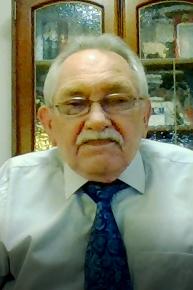From tradition to the future
This 25th NATIONAL CONFERENCE ON AERIAL PHOTOINTERPRETATION AND REMOTE SENSING is an anniversary one with a tradition dating back to 1964, when the first such conference was organised at the Geographical Institute of the University of Warsaw.
|
|
The event brought together specialists from Geographical Sciences and Photogrammetry, Geodesy, and Cartography. From today's perspective, it can be considered a programmatic conference in effect of which remote sensing was introduced as an obligatory course into university-level Geography curricula.
The first conference also highlighted a number of practical areas where remote sensing methodologies could be applied in research and planning. Similarly, it provided a platform for cooperation between specialists engaged in Earth Observation in the broadest sense and offered practical applications of remote sensing methodologies in solving specific spatial management problems.
All the conferences held so far have familiarised their participants, who also included individuals and institutions interested in these issues, with recent developments in this field and prospects for the future.
The conference organisers include the Polish Geographical Society (its Photointerpretation Committee, Remote Sensing Club, Remote Sensing and Geoinformatics Division) in cooperation with universities, research institutes, and scientific and technical societies, such as the Polish Society for Photogrammetry and Remote Sensing.
Overall, the 24 conferences held to date have presented a total of 744 papers and posters. Their attendance totalled approximately 2,000 person-conference units, which corresponds to 84 participants per conference. The ratio of speakers to the number of total participants was 1:2.6. In other words, the delivery of academic papers was at 37%. The conferences were held in Poland’s major university centres and attracted representatives of remote sensing centres from abroad.
The 25th Conference on Aerial Photo Interpretation and Remote Sensing will summarise the developments that have taken place since the last conference and outline trends in contemporary remote sensing methods and technologies for Earth Observation, including airborne and satellite data collection techniques as well as underlying geoinformatics methods. Importantly, it will also highlight the links between both national research (including research under the National Space Programme) and international initiatives, notably the European Earth Observation programmes implemented through ESA (Copernicus).
Therefore, we invite representatives from ESA and other international organisations as well as academics and students from foreign universities and research centres to participate in our Conference.
Jan R. Olędzki

